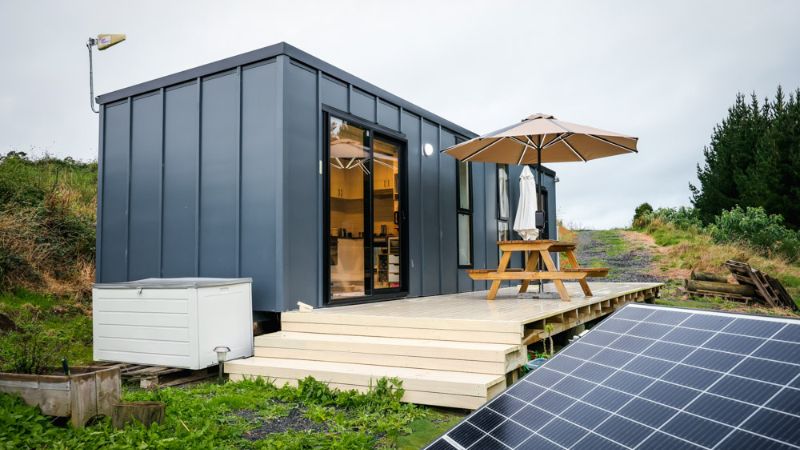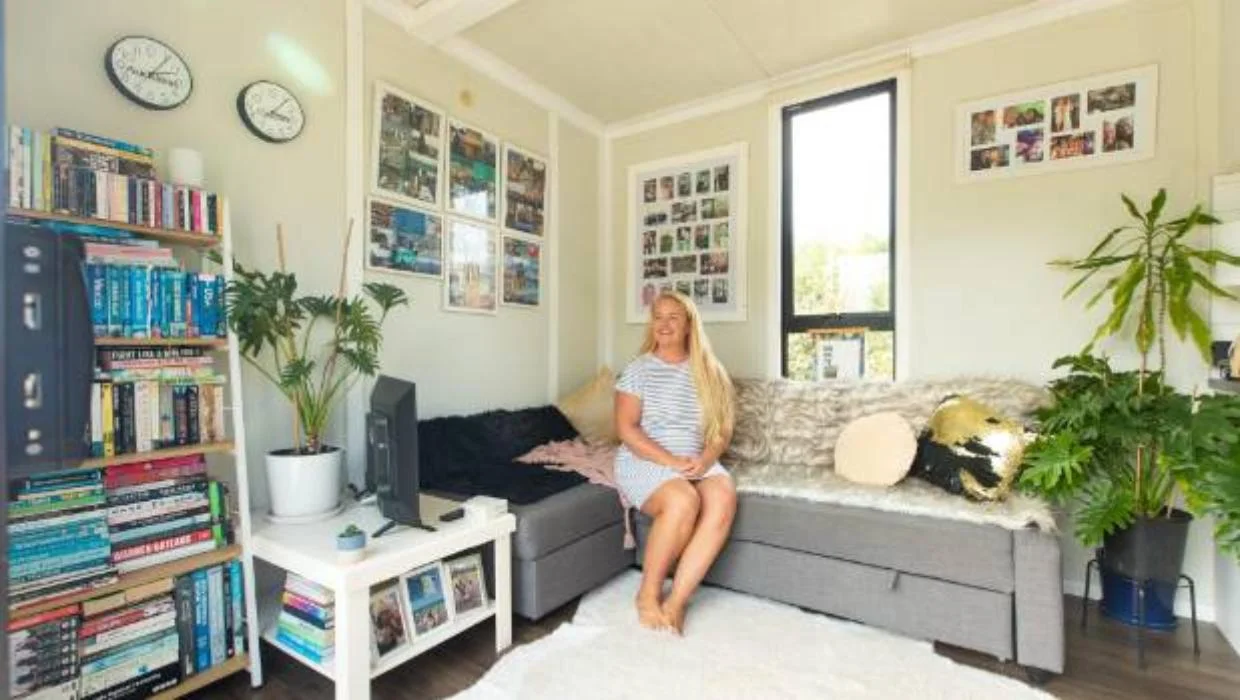Another tiny house owner in Auckland is left jumping through regulatory hurdles after a neighbour complains to council.
Bethan Collings' confrontation with regulatory challenges began when she received an abatement notice from Auckland Council on April 10, 2024. The notice, triggered by a neighbor's complaint, classified her tiny house as a minor dwelling and ordered her to disestablish the tiny house by May 10, or secure legal compliance by July 10th. This process involved obtaining resource consent for a minor dwelling and building consent, alongside paying a development contributions fee.
The costs to apply for consent
Upon further consultation with council planners, Bethan was initially given an estimate ranging from $8,000 to $20,000. However, after more detailed discussions, it became clear that this initial estimate was quite conservative. The actual costs were more accurately projected to be between $50,000 and $80,000, a financial burden Bethan could not manage due to existing debts from moving and setting her tiny house up on the land.
Details of the Tiny House
Bethan's home, though tiny, is a marvel of sustainability. Positioned on leased land in East Tamaki Heights, Auckland. Her home rests on timber blocks instead of a permanent foundation. The tiny house operates off-grid, powered by a solar system housed in a garden shed, with water supplied from a rooftop collection system, held in a water tank sitting on the ground next to the tiny house. A composting toilet handles sanitation needs, while greywater is fed into the ground and treated on-site using natural vermiculture processes.
Key Compliance Issues
Initial conversations with council representatives pinpointed two significant compliance challenges for Bethan's tiny house: The first being that it does not meet the definition of a vehicle. The second being the tiny house is considered "fixed to the land" due to its connections to external utilities and its foundational support.
Community Engagement and Legal Consultations
Feeling overwhelmed, Bethan reached out to the tiny house community, legal experts, and the Ministry of Business, Innovation and Employment (MBIE) for guidance. Her proactive efforts were focused on identifying a sustainable way forward without enduring financial hardship. Some of the advice she received led her to reconsider the usual consent pathway. If she were to relocate her tiny house to another leased property in the future, she would face the same costly and repetitive process of applying for new consents and fees each time she moved the tiny house, with no guarantee of approval. This realization underscored the impracticality of pursuing traditional resource and building consents under her circumstances. Since Bethan only leases the land and the duration of her stay is uncertain, the legal costs required to appeal the abatement notice also seemed impractical.
Strategic Compliance and Revaluation
To comply with the abatement notice, Bethan began disestablishing her home by disconnecting utilities and removing appliances, effectively stripping the house of its "dwelling" characteristics. This act of compliance, however, was a stepping stone to hopefully a more sustainable solution.
Exploring Re-classification: The Caravan Option
Bethan is currently exploring the possibility of modifying her tiny house as a caravan, which might allow her to circumvent the usual resource consent requirements under the Auckland Unitary Plan (AUP). The requirements of this strategy, which has not yet been confirmed by Auckland council, involves significant modifications to the tiny house:
Mounting the House on a Trailer: Bethan is considering transforming her tiny house into a vehicle by placing it on a road-legal trailer. This change could potentially reclassify her tiny home as a vehicle.
Self-Contained Utilities: Bethan is looking to fully integrate all essential utilities—wastewater and freshwater tanks, along with power systems—within her tiny house. This redesign is strategically focused on ensuring that when the house needs to be relocated, all utilities will be self-contained and mobile, securely incorporated within the structure itself rather than fixed to the land. She is referencing the Self-Containment Certification NZS 5465:2001 standards to guide this integration.
Before starting any modifications to her tiny house, Bethan has been in contact with council planners to outline all the proposed changes she intends to make. She is currently awaiting their confirmation that these changes will be approved.
At the time of publishing, Bethan had not yet received a response from Auckland Council regarding her proposed changes. However, the Council has stated, "At the moment, we have to take a case-by-case approach when assessing whether a tiny home or caravan is compliant with the relevant laws. Tiny homes, while becoming more popular, are fairly new and we do not have specific guidance in place yet. Later this year, we will issue a guidance note that we hope will help the community make well-informed decisions." They also recommend that, "In the meantime, homeowners should work with an independent planning expert to check whether their tiny home is compliant with the Building Act, Resource Management Act, and Auckland Unitary Plan."
We will keep you updated on Bethan's progress with Auckland Council and will update you in the near future with her progress.



